-
Market, BY Type (USD Billion)
-
\r\n\r\n\r\nBeer
-
\r\n\r\n\r\nCider
-
\r\n\r\n\r\nWine
-
\r\n\r\n\r\nReady-to-Drink Cocktails
-
\r\n\r\n\r\nSpirits
-
\r\n\r\n\r\n\r\n\r\nCanned Alcoholic Beverages
-
Market, BY Flavor (USD Billion)
-
\r\n\r\n\r\nFruity
-
\r\n\r\n\r\nSpicy
-
\r\n\r\n\r\nHerbal
-
\r\n\r\n\r\nClassic
-
\r\n\r\n\r\nSavory
-
\r\n\r\n\r\n\r\n\r\nCanned Alcoholic Beverages
-
Market, BY Packaging Type (USD Billion)
-
\r\n\r\n\r\nStandard Cans
-
\r\n\r\n\r\nSlim Cans
-
\r\n\r\n\r\nLarge Format Cans
-
\r\n\r\n\r\nCan Multi-Packs
-
\r\n\r\n\r\nAluminum Bottles
-
\r\n\r\n\r\n\r\n\r\nCanned Alcoholic Beverages
-
Market, BY Distribution Channel (USD Billion)
-
\r\n\r\n\r\nSupermarkets/Hypermarkets
-
\r\n\r\n\r\nConvenience Stores
-
\r\n\r\n\r\nOnline Retail
-
\r\n\r\n\r\nSpecialty Stores
-
\r\n\r\n\r\nBars/Restaurants
-
\r\n\r\n\r\n\r\n\r\nCanned Alcoholic Beverages
-
Market, BY Regional (USD Billion)
-
\r\n\r\n\r\nNorth America
-
\r\n\r\n\r\nUS
-
\r\n\r\n\r\nCanada
-
\r\n\r\n\r\n\r\n\r\nEurope
-
\r\n\r\n\r\nGermany
-
\r\n\r\n\r\nUK
-
\r\n\r\n\r\nFrance
-
\r\n\r\n\r\nRussia
-
\r\n\r\n\r\nItaly
-
\r\n\r\n\r\nSpain
-
\r\n\r\n\r\nRest of Europe
-
\r\n\r\n\r\n\r\n\r\nAPAC
-
\r\n\r\n\r\nChina
-
\r\n\r\n\r\nIndia
-
\r\n\r\n\r\nJapan
-
\r\n\r\n\r\nSouth Korea
-
\r\n\r\n\r\nMalaysia
-
\r\n\r\n\r\nThailand
-
\r\n\r\n\r\nIndonesia
-
\r\n\r\n\r\nRest of APAC
-
\r\n\r\n\r\n\r\n\r\nSouth America
-
\r\n\r\n\r\nBrazil
-
\r\n\r\n\r\nMexico
-
\r\n\r\n\r\nArgentina
-
\r\n\r\n\r\nRest of South America
-
\r\n\r\n\r\n\r\n\r\nMEA
-
\r\n\r\n\r\nGCC Countries
-
\r\n\r\n\r\nSouth Africa
-
\r\n\r\n\r\nRest of MEA
-
\r\n\r\n\r\n\r\n\r\n\r\n\r\n
-
\r\n
-
\r\n\r\n\r\nCompetitive Landscape
-
\r\n\r\n\r\nOverview
-
\r\n\r\n\r\nCompetitive Analysis
-
\r\n\r\n\r\nMarket share Analysis
-
\r\n\r\n\r\nMajor Growth Strategy in the
-
Canned Alcoholic Beverages Market
-
\r\n\r\n\r\nCompetitive Benchmarking
-
\r\n\r\n\r\nLeading Players in Terms of
-
Number of Developments in the Canned Alcoholic Beverages Market
-
\r\n\r\n\r\nKey developments and growth
-
strategies
-
\r\n\r\n\r\nNew Product Launch/Service Deployment
-
\r\n\r\n\r\nMerger & Acquisitions
-
\r\n\r\n\r\nJoint Ventures
-
\r\n\r\n\r\n\r\n\r\nMajor Players Financial Matrix
-
\r\n\r\n\r\nSales and Operating Income
-
\r\n\r\n\r\nMajor Players R&D Expenditure.
-
\r\n\r\n\r\n\r\n\r\n\r\n\r\nCompany Profiles
-
\r\n\r\n\r\nMike's Hard Lemonade
-
\r\n\r\n\r\nFinancial Overview
-
\r\n\r\n\r\nProducts Offered
-
\r\n\r\n\r\nKey Developments
-
\r\n\r\n\r\nSWOT Analysis
-
\r\n\r\n\r\nKey Strategies
-
\r\n\r\n\r\n\r\n\r\nAnheuserBusch InBev
-
\r\n\r\n\r\nFinancial Overview
-
\r\n\r\n\r\nProducts Offered
-
\r\n\r\n\r\nKey Developments
-
\r\n\r\n\r\nSWOT Analysis
-
\r\n\r\n\r\nKey Strategies
-
\r\n\r\n\r\n\r\n\r\nMolson Coors Beverage Company
-
\r\n\r\n\r\nFinancial Overview
-
\r\n\r\n\r\nProducts Offered
-
\r\n\r\n\r\nKey Developments
-
\r\n\r\n\r\nSWOT Analysis
-
\r\n\r\n\r\nKey Strategies
-
\r\n\r\n\r\n\r\n\r\nSABMiller
-
\r\n\r\n\r\nFinancial Overview
-
\r\n\r\n\r\nProducts Offered
-
\r\n\r\n\r\nKey Developments
-
\r\n\r\n\r\nSWOT Analysis
-
\r\n\r\n\r\nKey Strategies
-
\r\n\r\n\r\n\r\n\r\nPernod Ricard
-
\r\n\r\n\r\nFinancial Overview
-
\r\n\r\n\r\nProducts Offered
-
\r\n\r\n\r\nKey Developments
-
\r\n\r\n\r\nSWOT Analysis
-
\r\n\r\n\r\nKey Strategies
-
\r\n\r\n\r\n\r\n\r\nBacardi Limited
-
\r\n\r\n\r\nFinancial Overview
-
\r\n\r\n\r\nProducts Offered
-
\r\n\r\n\r\nKey Developments
-
\r\n\r\n\r\nSWOT Analysis
-
\r\n\r\n\r\nKey Strategies
-
\r\n\r\n\r\n\r\n\r\nCarlsberg Group
-
\r\n\r\n\r\nFinancial Overview
-
\r\n\r\n\r\nProducts Offered
-
\r\n\r\n\r\nKey Developments
-
\r\n\r\n\r\nSWOT Analysis
-
\r\n\r\n\r\nKey Strategies
-
\r\n\r\n\r\n\r\n\r\nCrown Imports
-
\r\n\r\n\r\nFinancial Overview
-
\r\n\r\n\r\nProducts Offered
-
\r\n\r\n\r\nKey Developments
-
\r\n\r\n\r\nSWOT Analysis
-
\r\n\r\n\r\nKey Strategies
-
\r\n\r\n\r\n\r\n\r\nThe CocaCola Company
-
\r\n\r\n\r\nFinancial Overview
-
\r\n\r\n\r\nProducts Offered
-
\r\n\r\n\r\nKey Developments
-
\r\n\r\n\r\nSWOT Analysis
-
\r\n\r\n\r\nKey Strategies
-
\r\n\r\n\r\n\r\n\r\nDiageo
-
\r\n\r\n\r\nFinancial Overview
-
\r\n\r\n\r\nProducts Offered
-
\r\n\r\n\r\nKey Developments
-
\r\n\r\n\r\nSWOT Analysis
-
\r\n\r\n\r\nKey Strategies
-
\r\n\r\n\r\n\r\n\r\nHeineken N.V.
-
\r\n\r\n\r\nFinancial Overview
-
\r\n\r\n\r\nProducts Offered
-
\r\n\r\n\r\nKey Developments
-
\r\n\r\n\r\nSWOT Analysis
-
\r\n\r\n\r\nKey Strategies
-
\r\n\r\n\r\n\r\n\r\nAB InBev
-
\r\n\r\n\r\nFinancial Overview
-
\r\n\r\n\r\nProducts Offered
-
\r\n\r\n\r\nKey Developments
-
\r\n\r\n\r\nSWOT Analysis
-
\r\n\r\n\r\nKey Strategies
-
\r\n\r\n\r\n\r\n\r\nConstellation Brands
-
\r\n\r\n\r\nFinancial Overview
-
\r\n\r\n\r\nProducts Offered
-
\r\n\r\n\r\nKey Developments
-
\r\n\r\n\r\nSWOT Analysis
-
\r\n\r\n\r\nKey Strategies
-
\r\n\r\n\r\n\r\n\r\nWhite Claw Hard Seltzer
-
\r\n\r\n\r\nFinancial Overview
-
\r\n\r\n\r\nProducts Offered
-
\r\n\r\n\r\nKey Developments
-
\r\n\r\n\r\nSWOT Analysis
-
\r\n\r\n\r\nKey Strategies
-
\r\n\r\n\r\n\r\n\r\nZevia LLC
-
\r\n\r\n\r\nFinancial Overview
-
\r\n\r\n\r\nProducts Offered
-
\r\n\r\n\r\nKey Developments
-
\r\n\r\n\r\nSWOT Analysis
-
\r\n\r\n\r\nKey Strategies
-
\r\n\r\n\r\n\r\n\r\n\r\n\r\nAppendix
-
\r\n\r\n\r\nReferences
-
\r\n\r\n\r\nRelated Reports
-
\r\n\r\n\r\n\r\n\r\nLIST Of tables
-
\r\n
-
\r\n\r\n\r\nLIST OF ASSUMPTIONS
-
\r\n\r\n\r\nNorth America Canned Alcoholic
-
Beverages Market SIZE ESTIMATES & FORECAST, BY TYPE, 2019-2035 (USD Billions)
-
\r\n\r\n\r\nNorth America Canned Alcoholic
-
Beverages Market SIZE ESTIMATES & FORECAST, BY FLAVOR, 2019-2035 (USD Billions)
-
\r\n\r\n\r\nNorth America Canned Alcoholic
-
Beverages Market SIZE ESTIMATES & FORECAST, BY PACKAGING TYPE, 2019-2035 (USD
-
Billions)
-
\r\n\r\n\r\nNorth America Canned Alcoholic Beverages Market SIZE ESTIMATES &
-
FORECAST, BY DISTRIBUTION CHANNEL, 2019-2035 (USD Billions)
-
\r\n\r\n\r\nNorth America Canned Alcoholic
-
Beverages Market SIZE ESTIMATES & FORECAST, BY REGIONAL, 2019-2035 (USD Billions)
-
\r\n\r\n\r\nUS Canned Alcoholic Beverages
-
Market SIZE ESTIMATES & FORECAST, BY TYPE, 2019-2035 (USD Billions)
-
\r\n\r\n\r\nUS Canned Alcoholic Beverages
-
Market SIZE ESTIMATES & FORECAST, BY FLAVOR, 2019-2035 (USD Billions)
-
\r\n\r\n\r\nUS Canned Alcoholic Beverages
-
Market SIZE ESTIMATES & FORECAST, BY PACKAGING TYPE, 2019-2035 (USD Billions)
-
\r\n\r\n\r\nUS Canned Alcoholic Beverages
-
Market SIZE ESTIMATES & FORECAST, BY DISTRIBUTION CHANNEL, 2019-2035 (USD Billions)
-
\r\n\r\n\r\nUS Canned Alcoholic Beverages
-
Market SIZE ESTIMATES & FORECAST, BY REGIONAL, 2019-2035 (USD Billions)
-
\r\n\r\n\r\nCanada Canned Alcoholic Beverages
-
Market SIZE ESTIMATES & FORECAST, BY TYPE, 2019-2035 (USD Billions)
-
\r\n\r\n\r\nCanada Canned Alcoholic Beverages
-
Market SIZE ESTIMATES & FORECAST, BY FLAVOR, 2019-2035 (USD Billions)
-
\r\n\r\n\r\nCanada Canned Alcoholic Beverages
-
Market SIZE ESTIMATES & FORECAST, BY PACKAGING TYPE, 2019-2035 (USD Billions)
-
\r\n\r\n\r\nCanada Canned Alcoholic Beverages
-
Market SIZE ESTIMATES & FORECAST, BY DISTRIBUTION CHANNEL, 2019-2035 (USD Billions)
-
\r\n\r\n\r\nCanada Canned Alcoholic Beverages
-
Market SIZE ESTIMATES & FORECAST, BY REGIONAL, 2019-2035 (USD Billions)
-
\r\n\r\n\r\nEurope Canned Alcoholic Beverages
-
Market SIZE ESTIMATES & FORECAST, BY TYPE, 2019-2035 (USD Billions)
-
\r\n\r\n\r\nEurope Canned Alcoholic Beverages
-
Market SIZE ESTIMATES & FORECAST, BY FLAVOR, 2019-2035 (USD Billions)
-
\r\n\r\n\r\nEurope Canned Alcoholic Beverages
-
Market SIZE ESTIMATES & FORECAST, BY PACKAGING TYPE, 2019-2035 (USD Billions)
-
\r\n\r\n\r\nEurope Canned Alcoholic Beverages
-
Market SIZE ESTIMATES & FORECAST, BY DISTRIBUTION CHANNEL, 2019-2035 (USD Billions)
-
\r\n\r\n\r\nEurope Canned Alcoholic Beverages
-
Market SIZE ESTIMATES & FORECAST, BY REGIONAL, 2019-2035 (USD Billions)
-
\r\n\r\n\r\nGermany Canned Alcoholic Beverages
-
Market SIZE ESTIMATES & FORECAST, BY TYPE, 2019-2035 (USD Billions)
-
\r\n\r\n\r\nGermany Canned Alcoholic Beverages
-
Market SIZE ESTIMATES & FORECAST, BY FLAVOR, 2019-2035 (USD Billions)
-
\r\n\r\n\r\nGermany Canned Alcoholic Beverages
-
Market SIZE ESTIMATES & FORECAST, BY PACKAGING TYPE, 2019-2035 (USD Billions)
-
\r\n\r\n\r\nGermany Canned Alcoholic Beverages
-
Market SIZE ESTIMATES & FORECAST, BY DISTRIBUTION CHANNEL, 2019-2035 (USD Billions)
-
\r\n\r\n\r\nGermany Canned Alcoholic Beverages
-
Market SIZE ESTIMATES & FORECAST, BY REGIONAL, 2019-2035 (USD Billions)
-
\r\n\r\n\r\nUK Canned Alcoholic Beverages
-
Market SIZE ESTIMATES & FORECAST, BY TYPE, 2019-2035 (USD Billions)
-
\r\n\r\n\r\nUK Canned Alcoholic Beverages
-
Market SIZE ESTIMATES & FORECAST, BY FLAVOR, 2019-2035 (USD Billions)
-
\r\n\r\n\r\nUK Canned Alcoholic Beverages
-
Market SIZE ESTIMATES & FORECAST, BY PACKAGING TYPE, 2019-2035 (USD Billions)
-
\r\n\r\n\r\nUK Canned Alcoholic Beverages
-
Market SIZE ESTIMATES & FORECAST, BY DISTRIBUTION CHANNEL, 2019-2035 (USD Billions)
-
\r\n\r\n\r\nUK Canned Alcoholic Beverages
-
Market SIZE ESTIMATES & FORECAST, BY REGIONAL, 2019-2035 (USD Billions)
-
\r\n\r\n\r\nFrance Canned Alcoholic Beverages
-
Market SIZE ESTIMATES & FORECAST, BY TYPE, 2019-2035 (USD Billions)
-
\r\n\r\n\r\nFrance Canned Alcoholic Beverages
-
Market SIZE ESTIMATES & FORECAST, BY FLAVOR, 2019-2035 (USD Billions)
-
\r\n\r\n\r\nFrance Canned Alcoholic Beverages
-
Market SIZE ESTIMATES & FORECAST, BY PACKAGING TYPE, 2019-2035 (USD Billions)
-
\r\n\r\n\r\nFrance Canned Alcoholic Beverages
-
Market SIZE ESTIMATES & FORECAST, BY DISTRIBUTION CHANNEL, 2019-2035 (USD Billions)
-
\r\n\r\n\r\nFrance Canned Alcoholic Beverages
-
Market SIZE ESTIMATES & FORECAST, BY REGIONAL, 2019-2035 (USD Billions)
-
\r\n\r\n\r\nRussia Canned Alcoholic Beverages
-
Market SIZE ESTIMATES & FORECAST, BY TYPE, 2019-2035 (USD Billions)
-
\r\n\r\n\r\nRussia Canned Alcoholic Beverages
-
Market SIZE ESTIMATES & FORECAST, BY FLAVOR, 2019-2035 (USD Billions)
-
\r\n\r\n\r\nRussia Canned Alcoholic Beverages
-
Market SIZE ESTIMATES & FORECAST, BY PACKAGING TYPE, 2019-2035 (USD Billions)
-
\r\n\r\n\r\nRussia Canned Alcoholic Beverages
-
Market SIZE ESTIMATES & FORECAST, BY DISTRIBUTION CHANNEL, 2019-2035 (USD Billions)
-
\r\n\r\n\r\nRussia Canned Alcoholic Beverages
-
Market SIZE ESTIMATES & FORECAST, BY REGIONAL, 2019-2035 (USD Billions)
-
\r\n\r\n\r\nItaly Canned Alcoholic Beverages
-
Market SIZE ESTIMATES & FORECAST, BY TYPE, 2019-2035 (USD Billions)
-
\r\n\r\n\r\nItaly Canned Alcoholic Beverages
-
Market SIZE ESTIMATES & FORECAST, BY FLAVOR, 2019-2035 (USD Billions)
-
\r\n\r\n\r\nItaly Canned Alcoholic Beverages
-
Market SIZE ESTIMATES & FORECAST, BY PACKAGING TYPE, 2019-2035 (USD Billions)
-
\r\n\r\n\r\nItaly Canned Alcoholic Beverages
-
Market SIZE ESTIMATES & FORECAST, BY DISTRIBUTION CHANNEL, 2019-2035 (USD Billions)
-
\r\n\r\n\r\nItaly Canned Alcoholic Beverages
-
Market SIZE ESTIMATES & FORECAST, BY REGIONAL, 2019-2035 (USD Billions)
-
\r\n\r\n\r\nSpain Canned Alcoholic Beverages
-
Market SIZE ESTIMATES & FORECAST, BY TYPE, 2019-2035 (USD Billions)
-
\r\n\r\n\r\nSpain Canned Alcoholic Beverages
-
Market SIZE ESTIMATES & FORECAST, BY FLAVOR, 2019-2035 (USD Billions)
-
\r\n\r\n\r\nSpain Canned Alcoholic Beverages
-
Market SIZE ESTIMATES & FORECAST, BY PACKAGING TYPE, 2019-2035 (USD Billions)
-
\r\n\r\n\r\nSpain Canned Alcoholic Beverages
-
Market SIZE ESTIMATES & FORECAST, BY DISTRIBUTION CHANNEL, 2019-2035 (USD Billions)
-
\r\n\r\n\r\nSpain Canned Alcoholic Beverages
-
Market SIZE ESTIMATES & FORECAST, BY REGIONAL, 2019-2035 (USD Billions)
-
\r\n\r\n\r\nRest of Europe Canned Alcoholic
-
Beverages Market SIZE ESTIMATES & FORECAST, BY TYPE, 2019-2035 (USD Billions)
-
\r\n\r\n\r\nRest of Europe Canned Alcoholic
-
Beverages Market SIZE ESTIMATES & FORECAST, BY FLAVOR, 2019-2035 (USD Billions)
-
\r\n\r\n\r\nRest of Europe Canned Alcoholic
-
Beverages Market SIZE ESTIMATES & FORECAST, BY PACKAGING TYPE, 2019-2035 (USD
-
Billions)
-
\r\n\r\n\r\nRest of Europe Canned Alcoholic Beverages Market SIZE ESTIMATES &
-
FORECAST, BY DISTRIBUTION CHANNEL, 2019-2035 (USD Billions)
-
\r\n\r\n\r\nRest of Europe Canned Alcoholic
-
Beverages Market SIZE ESTIMATES & FORECAST, BY REGIONAL, 2019-2035 (USD Billions)
-
\r\n\r\n\r\nAPAC Canned Alcoholic Beverages
-
Market SIZE ESTIMATES & FORECAST, BY TYPE, 2019-2035 (USD Billions)
-
\r\n\r\n\r\nAPAC Canned Alcoholic Beverages
-
Market SIZE ESTIMATES & FORECAST, BY FLAVOR, 2019-2035 (USD Billions)
-
\r\n\r\n\r\nAPAC Canned Alcoholic Beverages
-
Market SIZE ESTIMATES & FORECAST, BY PACKAGING TYPE, 2019-2035 (USD Billions)
-
\r\n\r\n\r\nAPAC Canned Alcoholic Beverages
-
Market SIZE ESTIMATES & FORECAST, BY DISTRIBUTION CHANNEL, 2019-2035 (USD Billions)
-
\r\n\r\n\r\nAPAC Canned Alcoholic Beverages
-
Market SIZE ESTIMATES & FORECAST, BY REGIONAL, 2019-2035 (USD Billions)
-
\r\n\r\n\r\nChina Canned Alcoholic Beverages
-
Market SIZE ESTIMATES & FORECAST, BY TYPE, 2019-2035 (USD Billions)
-
\r\n\r\n\r\nChina Canned Alcoholic Beverages
-
Market SIZE ESTIMATES & FORECAST, BY FLAVOR, 2019-2035 (USD Billions)
-
\r\n\r\n\r\nChina Canned Alcoholic Beverages
-
Market SIZE ESTIMATES & FORECAST, BY PACKAGING TYPE, 2019-2035 (USD Billions)
-
\r\n\r\n\r\nChina Canned Alcoholic Beverages
-
Market SIZE ESTIMATES & FORECAST, BY DISTRIBUTION CHANNEL, 2019-2035 (USD Billions)
-
\r\n\r\n\r\nChina Canned Alcoholic Beverages
-
Market SIZE ESTIMATES & FORECAST, BY REGIONAL, 2019-2035 (USD Billions)
-
\r\n\r\n\r\nIndia Canned Alcoholic Beverages
-
Market SIZE ESTIMATES & FORECAST, BY TYPE, 2019-2035 (USD Billions)
-
\r\n\r\n\r\nIndia Canned Alcoholic Beverages
-
Market SIZE ESTIMATES & FORECAST, BY FLAVOR, 2019-2035 (USD Billions)
-
\r\n\r\n\r\nIndia Canned Alcoholic Beverages
-
Market SIZE ESTIMATES & FORECAST, BY PACKAGING TYPE, 2019-2035 (USD Billions)
-
\r\n\r\n\r\nIndia Canned Alcoholic Beverages
-
Market SIZE ESTIMATES & FORECAST, BY DISTRIBUTION CHANNEL, 2019-2035 (USD Billions)
-
\r\n\r\n\r\nIndia Canned Alcoholic Beverages
-
Market SIZE ESTIMATES & FORECAST, BY REGIONAL, 2019-2035 (USD Billions)
-
\r\n\r\n\r\nJapan Canned Alcoholic Beverages
-
Market SIZE ESTIMATES & FORECAST, BY TYPE, 2019-2035 (USD Billions)
-
\r\n\r\n\r\nJapan Canned Alcoholic Beverages
-
Market SIZE ESTIMATES & FORECAST, BY FLAVOR, 2019-2035 (USD Billions)
-
\r\n\r\n\r\nJapan Canned Alcoholic Beverages
-
Market SIZE ESTIMATES & FORECAST, BY PACKAGING TYPE, 2019-2035 (USD Billions)
-
\r\n\r\n\r\nJapan Canned Alcoholic Beverages
-
Market SIZE ESTIMATES & FORECAST, BY DISTRIBUTION CHANNEL, 2019-2035 (USD Billions)
-
\r\n\r\n\r\nJapan Canned Alcoholic Beverages
-
Market SIZE ESTIMATES & FORECAST, BY REGIONAL, 2019-2035 (USD Billions)
-
\r\n\r\n\r\nSouth Korea Canned Alcoholic
-
Beverages Market SIZE ESTIMATES & FORECAST, BY TYPE, 2019-2035 (USD Billions)
-
\r\n\r\n\r\nSouth Korea Canned Alcoholic
-
Beverages Market SIZE ESTIMATES & FORECAST, BY FLAVOR, 2019-2035 (USD Billions)
-
\r\n\r\n\r\nSouth Korea Canned Alcoholic
-
Beverages Market SIZE ESTIMATES & FORECAST, BY PACKAGING TYPE, 2019-2035 (USD
-
Billions)
-
\r\n\r\n\r\nSouth Korea Canned Alcoholic Beverages Market SIZE ESTIMATES &
-
FORECAST, BY DISTRIBUTION CHANNEL, 2019-2035 (USD Billions)
-
\r\n\r\n\r\nSouth Korea Canned Alcoholic
-
Beverages Market SIZE ESTIMATES & FORECAST, BY REGIONAL, 2019-2035 (USD Billions)
-
\r\n\r\n\r\nMalaysia Canned Alcoholic Beverages
-
Market SIZE ESTIMATES & FORECAST, BY TYPE, 2019-2035 (USD Billions)
-
\r\n\r\n\r\nMalaysia Canned Alcoholic Beverages
-
Market SIZE ESTIMATES & FORECAST, BY FLAVOR, 2019-2035 (USD Billions)
-
\r\n\r\n\r\nMalaysia Canned Alcoholic Beverages
-
Market SIZE ESTIMATES & FORECAST, BY PACKAGING TYPE, 2019-2035 (USD Billions)
-
\r\n\r\n\r\nMalaysia Canned Alcoholic Beverages
-
Market SIZE ESTIMATES & FORECAST, BY DISTRIBUTION CHANNEL, 2019-2035 (USD Billions)
-
\r\n\r\n\r\nMalaysia Canned Alcoholic Beverages
-
Market SIZE ESTIMATES & FORECAST, BY REGIONAL, 2019-2035 (USD Billions)
-
\r\n\r\n\r\nThailand Canned Alcoholic Beverages
-
Market SIZE ESTIMATES & FORECAST, BY TYPE, 2019-2035 (USD Billions)
-
\r\n\r\n\r\nThailand Canned Alcoholic Beverages
-
Market SIZE ESTIMATES & FORECAST, BY FLAVOR, 2019-2035 (USD Billions)
-
\r\n\r\n\r\nThailand Canned Alcoholic Beverages
-
Market SIZE ESTIMATES & FORECAST, BY PACKAGING TYPE, 2019-2035 (USD Billions)
-
\r\n\r\n\r\nThailand Canned Alcoholic Beverages
-
Market SIZE ESTIMATES & FORECAST, BY DISTRIBUTION CHANNEL, 2019-2035 (USD Billions)
-
\r\n\r\n\r\nThailand Canned Alcoholic Beverages
-
Market SIZE ESTIMATES & FORECAST, BY REGIONAL, 2019-2035 (USD Billions)
-
\r\n\r\n\r\nIndonesia Canned Alcoholic
-
Beverages Market SIZE ESTIMATES & FORECAST, BY TYPE, 2019-2035 (USD Billions)
-
\r\n\r\n\r\nIndonesia Canned Alcoholic
-
Beverages Market SIZE ESTIMATES & FORECAST, BY FLAVOR, 2019-2035 (USD Billions)
-
\r\n\r\n\r\nIndonesia Canned Alcoholic
-
Beverages Market SIZE ESTIMATES & FORECAST, BY PACKAGING TYPE, 2019-2035 (USD
-
Billions)
-
\r\n\r\n\r\nIndonesia Canned Alcoholic Beverages Market SIZE ESTIMATES & FORECAST,
-
BY DISTRIBUTION CHANNEL, 2019-2035 (USD Billions)
-
\r\n\r\n\r\nIndonesia Canned Alcoholic
-
Beverages Market SIZE ESTIMATES & FORECAST, BY REGIONAL, 2019-2035 (USD Billions)
-
\r\n\r\n\r\nRest of APAC Canned Alcoholic
-
Beverages Market SIZE ESTIMATES & FORECAST, BY TYPE, 2019-2035 (USD Billions)
-
\r\n\r\n\r\nRest of APAC Canned Alcoholic
-
Beverages Market SIZE ESTIMATES & FORECAST, BY FLAVOR, 2019-2035 (USD Billions)
-
\r\n\r\n\r\nRest of APAC Canned Alcoholic
-
Beverages Market SIZE ESTIMATES & FORECAST, BY PACKAGING TYPE, 2019-2035 (USD
-
Billions)
-
\r\n\r\n\r\nRest of APAC Canned Alcoholic Beverages Market SIZE ESTIMATES &
-
FORECAST, BY DISTRIBUTION CHANNEL, 2019-2035 (USD Billions)
-
\r\n\r\n\r\nRest of APAC Canned Alcoholic
-
Beverages Market SIZE ESTIMATES & FORECAST, BY REGIONAL, 2019-2035 (USD Billions)
-
\r\n\r\n\r\nSouth America Canned Alcoholic
-
Beverages Market SIZE ESTIMATES & FORECAST, BY TYPE, 2019-2035 (USD Billions)
-
\r\n\r\n\r\nSouth America Canned Alcoholic
-
Beverages Market SIZE ESTIMATES & FORECAST, BY FLAVOR, 2019-2035 (USD Billions)
-
\r\n\r\n\r\nSouth America Canned Alcoholic
-
Beverages Market SIZE ESTIMATES & FORECAST, BY PACKAGING TYPE, 2019-2035 (USD
-
Billions)
-
\r\n\r\n\r\nSouth America Canned Alcoholic Beverages Market SIZE ESTIMATES &
-
FORECAST, BY DISTRIBUTION CHANNEL, 2019-2035 (USD Billions)
-
\r\n\r\n\r\nSouth America Canned Alcoholic
-
Beverages Market SIZE ESTIMATES & FORECAST, BY REGIONAL, 2019-2035 (USD Billions)
-
\r\n\r\n\r\nBrazil Canned Alcoholic Beverages
-
Market SIZE ESTIMATES & FORECAST, BY TYPE, 2019-2035 (USD Billions)
-
\r\n\r\n\r\nBrazil Canned Alcoholic Beverages
-
Market SIZE ESTIMATES & FORECAST, BY FLAVOR, 2019-2035 (USD Billions)
-
\r\n\r\n\r\nBrazil Canned Alcoholic Beverages
-
Market SIZE ESTIMATES & FORECAST, BY PACKAGING TYPE, 2019-2035 (USD Billions)
-
\r\n\r\n\r\nBrazil Canned Alcoholic Beverages
-
Market SIZE ESTIMATES & FORECAST, BY DISTRIBUTION CHANNEL, 2019-2035 (USD Billions)
-
\r\n\r\n\r\nBrazil Canned Alcoholic Beverages
-
Market SIZE ESTIMATES & FORECAST, BY REGIONAL, 2019-2035 (USD Billions)
-
\r\n\r\n\r\nMexico Canned Alcoholic Beverages
-
Market SIZE ESTIMATES & FORECAST, BY TYPE, 2019-2035 (USD Billions)
-
\r\n\r\n\r\nMexico Canned Alcoholic Beverages
-
Market SIZE ESTIMATES & FORECAST, BY FLAVOR, 2019-2035 (USD Billions)
-
\r\n\r\n\r\nMexico Canned Alcoholic Beverages
-
Market SIZE ESTIMATES & FORECAST, BY PACKAGING TYPE, 2019-2035 (USD Billions)
-
\r\n\r\n\r\nMexico Canned Alcoholic Beverages
-
Market SIZE ESTIMATES & FORECAST, BY DISTRIBUTION CHANNEL, 2019-2035 (USD Billions)
-
\r\n\r\n\r\nMexico Canned Alcoholic Beverages
-
Market SIZE ESTIMATES & FORECAST, BY REGIONAL, 2019-2035 (USD Billions)
-
\r\n\r\n\r\nArgentina Canned Alcoholic
-
Beverages Market SIZE ESTIMATES & FORECAST, BY TYPE, 2019-2035 (USD Billions)
-
\r\n\r\n\r\nArgentina Canned Alcoholic
-
Beverages Market SIZE ESTIMATES & FORECAST, BY FLAVOR, 2019-2035 (USD Billions)
-
\r\n\r\n\r\nArgentina Canned Alcoholic
-
Beverages Market SIZE ESTIMATES & FORECAST, BY PACKAGING TYPE, 2019-2035 (USD
-
Billions)
-
\r\n\r\n\r\nArgentina Canned Alcoholic Beverages Market SIZE ESTIMATES & FORECAST,
-
BY DISTRIBUTION CHANNEL, 2019-2035 (USD Billions)
-
\r\n\r\n\r\nArgentina Canned Alcoholic
-
Beverages Market SIZE ESTIMATES & FORECAST, BY REGIONAL, 2019-2035 (USD Billions)
-
\r\n\r\n\r\nRest of South America Canned
-
Alcoholic Beverages Market SIZE ESTIMATES & FORECAST, BY TYPE, 2019-2035 (USD
-
Billions)
-
\r\n\r\n\r\nRest of South America Canned Alcoholic Beverages Market SIZE ESTIMATES
-
& FORECAST, BY FLAVOR, 2019-2035 (USD Billions)
-
\r\n\r\n\r\nRest of South America Canned
-
Alcoholic Beverages Market SIZE ESTIMATES & FORECAST, BY PACKAGING TYPE, 2019-2035
-
(USD Billions)
-
\r\n\r\n\r\nRest of South America Canned Alcoholic Beverages Market
-
SIZE ESTIMATES & FORECAST, BY DISTRIBUTION CHANNEL, 2019-2035 (USD Billions)
-
\r\n\r\n\r\nRest of South America Canned
-
Alcoholic Beverages Market SIZE ESTIMATES & FORECAST, BY REGIONAL, 2019-2035
-
(USD Billions)
-
\r\n\r\n\r\nMEA Canned Alcoholic Beverages Market SIZE ESTIMATES &
-
FORECAST, BY TYPE, 2019-2035 (USD Billions)
-
\r\n\r\n\r\nMEA Canned Alcoholic Beverages
-
Market SIZE ESTIMATES & FORECAST, BY FLAVOR, 2019-2035 (USD Billions)
-
\r\n\r\n\r\nMEA Canned Alcoholic Beverages
-
Market SIZE ESTIMATES & FORECAST, BY PACKAGING TYPE, 2019-2035 (USD Billions)
-
\r\n\r\n\r\nMEA Canned Alcoholic Beverages
-
Market SIZE ESTIMATES & FORECAST, BY DISTRIBUTION CHANNEL, 2019-2035 (USD Billions)
-
\r\n\r\n\r\nMEA Canned Alcoholic Beverages
-
Market SIZE ESTIMATES & FORECAST, BY REGIONAL, 2019-2035 (USD Billions)
-
\r\n\r\n\r\nGCC Countries Canned Alcoholic
-
Beverages Market SIZE ESTIMATES & FORECAST, BY TYPE, 2019-2035 (USD Billions)
-
\r\n\r\n\r\nGCC Countries Canned Alcoholic
-
Beverages Market SIZE ESTIMATES & FORECAST, BY FLAVOR, 2019-2035 (USD Billions)
-
\r\n\r\n\r\nGCC Countries Canned Alcoholic
-
Beverages Market SIZE ESTIMATES & FORECAST, BY PACKAGING TYPE, 2019-2035 (USD
-
Billions)
-
\r\n\r\n\r\nGCC Countries Canned Alcoholic Beverages Market SIZE ESTIMATES &
-
FORECAST, BY DISTRIBUTION CHANNEL, 2019-2035 (USD Billions)
-
\r\n\r\n\r\nGCC Countries Canned Alcoholic
-
Beverages Market SIZE ESTIMATES & FORECAST, BY REGIONAL, 2019-2035 (USD Billions)
-
\r\n\r\n\r\nSouth Africa Canned Alcoholic
-
Beverages Market SIZE ESTIMATES & FORECAST, BY TYPE, 2019-2035 (USD Billions)
-
\r\n\r\n\r\nSouth Africa Canned Alcoholic
-
Beverages Market SIZE ESTIMATES & FORECAST, BY FLAVOR, 2019-2035 (USD Billions)
-
\r\n\r\n\r\nSouth Africa Canned Alcoholic
-
Beverages Market SIZE ESTIMATES & FORECAST, BY PACKAGING TYPE, 2019-2035 (USD
-
Billions)
-
\r\n\r\n\r\nSouth Africa Canned Alcoholic Beverages Market SIZE ESTIMATES &
-
FORECAST, BY DISTRIBUTION CHANNEL, 2019-2035 (USD Billions)
-
\r\n\r\n\r\nSouth Africa Canned Alcoholic
-
Beverages Market SIZE ESTIMATES & FORECAST, BY REGIONAL, 2019-2035 (USD Billions)
-
\r\n\r\n\r\nRest of MEA Canned Alcoholic
-
Beverages Market SIZE ESTIMATES & FORECAST, BY TYPE, 2019-2035 (USD Billions)
-
\r\n\r\n\r\nRest of MEA Canned Alcoholic
-
Beverages Market SIZE ESTIMATES & FORECAST, BY FLAVOR, 2019-2035 (USD Billions)
-
\r\n\r\n\r\nRest of MEA Canned Alcoholic
-
Beverages Market SIZE ESTIMATES & FORECAST, BY PACKAGING TYPE, 2019-2035 (USD
-
Billions)
-
\r\n\r\n\r\nRest of MEA Canned Alcoholic Beverages Market SIZE ESTIMATES &
-
FORECAST, BY DISTRIBUTION CHANNEL, 2019-2035 (USD Billions)
-
\r\n\r\n\r\nRest of MEA Canned Alcoholic
-
Beverages Market SIZE ESTIMATES & FORECAST, BY REGIONAL, 2019-2035 (USD Billions)
-
\r\n\r\n\r\nPRODUCT LAUNCH/PRODUCT DEVELOPMENT/APPROVAL
-
\r\n\r\n\r\nACQUISITION/PARTNERSHIP
-
\r\n\r\n\r\n
-
\r\n
-
\r\n
-
\r\n
-
\r\n
-
\r\n
-
\r\n
-
\r\n
-
\r\n
-
\r\n
-
\r\n
-
\r\n
-
\r\n
-
\r\n
-
\r\n
-
\r\n
-
\r\n
-
\r\n
-
\r\n
-
\r\n
-
\r\n
-
\r\n
-
\r\n
-
\r\n
-
\r\n
-
\r\n
-
\r\n
-
\r\n
-
\r\n
-
\r\nLIST Of figures
-
\r\n
-
\r\n\r\n\r\nMARKET SYNOPSIS
-
\r\n\r\n\r\nNORTH AMERICA CANNED ALCOHOLIC
-
BEVERAGES MARKET ANALYSIS
-
\r\n\r\n\r\nUS CANNED ALCOHOLIC BEVERAGES MARKET ANALYSIS BY
-
TYPE
-
\r\n\r\n\r\nUS CANNED ALCOHOLIC BEVERAGES MARKET ANALYSIS BY FLAVOR
-
\r\n\r\n\r\nUS CANNED ALCOHOLIC BEVERAGES
-
MARKET ANALYSIS BY PACKAGING TYPE
-
\r\n\r\n\r\nUS CANNED ALCOHOLIC BEVERAGES MARKET ANALYSIS BY
-
DISTRIBUTION CHANNEL
-
\r\n\r\n\r\nUS CANNED ALCOHOLIC BEVERAGES MARKET ANALYSIS BY
-
REGIONAL
-
\r\n\r\n\r\nCANADA CANNED ALCOHOLIC BEVERAGES MARKET ANALYSIS BY TYPE
-
\r\n\r\n\r\nCANADA CANNED ALCOHOLIC BEVERAGES
-
MARKET ANALYSIS BY FLAVOR
-
\r\n\r\n\r\nCANADA CANNED ALCOHOLIC BEVERAGES MARKET ANALYSIS
-
BY PACKAGING TYPE
-
\r\n\r\n\r\nCANADA CANNED ALCOHOLIC BEVERAGES MARKET ANALYSIS BY DISTRIBUTION
-
CHANNEL
-
\r\n\r\n\r\nCANADA CANNED ALCOHOLIC BEVERAGES MARKET ANALYSIS BY REGIONAL
-
\r\n\r\n\r\nEUROPE CANNED ALCOHOLIC BEVERAGES
-
MARKET ANALYSIS
-
\r\n\r\n\r\nGERMANY CANNED ALCOHOLIC BEVERAGES MARKET ANALYSIS BY TYPE
-
\r\n\r\n\r\nGERMANY CANNED ALCOHOLIC BEVERAGES
-
MARKET ANALYSIS BY FLAVOR
-
\r\n\r\n\r\nGERMANY CANNED ALCOHOLIC BEVERAGES MARKET ANALYSIS
-
BY PACKAGING TYPE
-
\r\n\r\n\r\nGERMANY CANNED ALCOHOLIC BEVERAGES MARKET ANALYSIS BY DISTRIBUTION
-
CHANNEL
-
\r\n\r\n\r\nGERMANY CANNED ALCOHOLIC BEVERAGES MARKET ANALYSIS BY REGIONAL
-
\r\n\r\n\r\nUK CANNED ALCOHOLIC BEVERAGES
-
MARKET ANALYSIS BY TYPE
-
\r\n\r\n\r\nUK CANNED ALCOHOLIC BEVERAGES MARKET ANALYSIS BY
-
FLAVOR
-
\r\n\r\n\r\nUK CANNED ALCOHOLIC BEVERAGES MARKET ANALYSIS BY PACKAGING TYPE
-
\r\n\r\n\r\nUK CANNED ALCOHOLIC BEVERAGES
-
MARKET ANALYSIS BY DISTRIBUTION CHANNEL
-
\r\n\r\n\r\nUK CANNED ALCOHOLIC BEVERAGES
-
MARKET ANALYSIS BY REGIONAL
-
\r\n\r\n\r\nFRANCE CANNED ALCOHOLIC BEVERAGES MARKET ANALYSIS
-
BY TYPE
-
\r\n\r\n\r\nFRANCE CANNED ALCOHOLIC BEVERAGES MARKET ANALYSIS BY FLAVOR
-
\r\n\r\n\r\nFRANCE CANNED ALCOHOLIC BEVERAGES
-
MARKET ANALYSIS BY PACKAGING TYPE
-
\r\n\r\n\r\nFRANCE CANNED ALCOHOLIC BEVERAGES MARKET ANALYSIS
-
BY DISTRIBUTION CHANNEL
-
\r\n\r\n\r\nFRANCE CANNED ALCOHOLIC BEVERAGES MARKET ANALYSIS
-
BY REGIONAL
-
\r\n\r\n\r\nRUSSIA CANNED ALCOHOLIC BEVERAGES MARKET ANALYSIS BY TYPE
-
\r\n\r\n\r\nRUSSIA CANNED ALCOHOLIC BEVERAGES
-
MARKET ANALYSIS BY FLAVOR
-
\r\n\r\n\r\nRUSSIA CANNED ALCOHOLIC BEVERAGES MARKET ANALYSIS
-
BY PACKAGING TYPE
-
\r\n\r\n\r\nRUSSIA CANNED ALCOHOLIC BEVERAGES MARKET ANALYSIS BY DISTRIBUTION
-
CHANNEL
-
\r\n\r\n\r\nRUSSIA CANNED ALCOHOLIC BEVERAGES MARKET ANALYSIS BY REGIONAL
-
\r\n\r\n\r\nITALY CANNED ALCOHOLIC BEVERAGES
-
MARKET ANALYSIS BY TYPE
-
\r\n\r\n\r\nITALY CANNED ALCOHOLIC BEVERAGES MARKET ANALYSIS
-
BY FLAVOR
-
\r\n\r\n\r\nITALY CANNED ALCOHOLIC BEVERAGES MARKET ANALYSIS BY PACKAGING TYPE
-
\r\n\r\n\r\nITALY CANNED ALCOHOLIC BEVERAGES
-
MARKET ANALYSIS BY DISTRIBUTION CHANNEL
-
\r\n\r\n\r\nITALY CANNED ALCOHOLIC BEVERAGES
-
MARKET ANALYSIS BY REGIONAL
-
\r\n\r\n\r\nSPAIN CANNED ALCOHOLIC BEVERAGES MARKET ANALYSIS
-
BY TYPE
-
\r\n\r\n\r\nSPAIN CANNED ALCOHOLIC BEVERAGES MARKET ANALYSIS BY FLAVOR
-
\r\n\r\n\r\nSPAIN CANNED ALCOHOLIC BEVERAGES
-
MARKET ANALYSIS BY PACKAGING TYPE
-
\r\n\r\n\r\nSPAIN CANNED ALCOHOLIC BEVERAGES MARKET ANALYSIS
-
BY DISTRIBUTION CHANNEL
-
\r\n\r\n\r\nSPAIN CANNED ALCOHOLIC BEVERAGES MARKET ANALYSIS
-
BY REGIONAL
-
\r\n\r\n\r\nREST OF EUROPE CANNED ALCOHOLIC BEVERAGES MARKET ANALYSIS
-
BY TYPE
-
\r\n\r\n\r\nREST OF EUROPE CANNED ALCOHOLIC BEVERAGES MARKET ANALYSIS BY FLAVOR
-
\r\n\r\n\r\nREST OF EUROPE CANNED ALCOHOLIC
-
BEVERAGES MARKET ANALYSIS BY PACKAGING TYPE
-
\r\n\r\n\r\nREST OF EUROPE CANNED ALCOHOLIC
-
BEVERAGES MARKET ANALYSIS BY DISTRIBUTION CHANNEL
-
\r\n\r\n\r\nREST OF EUROPE CANNED ALCOHOLIC
-
BEVERAGES MARKET ANALYSIS BY REGIONAL
-
\r\n\r\n\r\nAPAC CANNED ALCOHOLIC BEVERAGES MARKET ANALYSIS
-
\r\n\r\n\r\nCHINA CANNED ALCOHOLIC BEVERAGES
-
MARKET ANALYSIS BY TYPE
-
\r\n\r\n\r\nCHINA CANNED ALCOHOLIC BEVERAGES MARKET ANALYSIS
-
BY FLAVOR
-
\r\n\r\n\r\nCHINA CANNED ALCOHOLIC BEVERAGES MARKET ANALYSIS BY PACKAGING TYPE
-
\r\n\r\n\r\nCHINA CANNED ALCOHOLIC BEVERAGES
-
MARKET ANALYSIS BY DISTRIBUTION CHANNEL
-
\r\n\r\n\r\nCHINA CANNED ALCOHOLIC BEVERAGES
-
MARKET ANALYSIS BY REGIONAL
-
\r\n\r\n\r\nINDIA CANNED ALCOHOLIC BEVERAGES MARKET ANALYSIS
-
BY TYPE
-
\r\n\r\n\r\nINDIA CANNED ALCOHOLIC BEVERAGES MARKET ANALYSIS BY FLAVOR
-
\r\n\r\n\r\nINDIA CANNED ALCOHOLIC BEVERAGES
-
MARKET ANALYSIS BY PACKAGING TYPE
-
\r\n\r\n\r\nINDIA CANNED ALCOHOLIC BEVERAGES MARKET ANALYSIS
-
BY DISTRIBUTION CHANNEL
-
\r\n\r\n\r\nINDIA CANNED ALCOHOLIC BEVERAGES MARKET ANALYSIS
-
BY REGIONAL
-
\r\n\r\n\r\nJAPAN CANNED ALCOHOLIC BEVERAGES MARKET ANALYSIS BY TYPE
-
\r\n\r\n\r\nJAPAN CANNED ALCOHOLIC BEVERAGES
-
MARKET ANALYSIS BY FLAVOR
-
\r\n\r\n\r\nJAPAN CANNED ALCOHOLIC BEVERAGES MARKET ANALYSIS
-
BY PACKAGING TYPE
-
\r\n\r\n\r\nJAPAN CANNED ALCOHOLIC BEVERAGES MARKET ANALYSIS BY DISTRIBUTION
-
CHANNEL
-
\r\n\r\n\r\nJAPAN CANNED ALCOHOLIC BEVERAGES MARKET ANALYSIS BY REGIONAL
-
\r\n\r\n\r\nSOUTH KOREA CANNED ALCOHOLIC
-
BEVERAGES MARKET ANALYSIS BY TYPE
-
\r\n\r\n\r\nSOUTH KOREA CANNED ALCOHOLIC BEVERAGES MARKET ANALYSIS
-
BY FLAVOR
-
\r\n\r\n\r\nSOUTH KOREA CANNED ALCOHOLIC BEVERAGES MARKET ANALYSIS BY PACKAGING
-
TYPE
-
\r\n\r\n\r\nSOUTH KOREA CANNED ALCOHOLIC BEVERAGES MARKET ANALYSIS BY DISTRIBUTION
-
CHANNEL
-
\r\n\r\n\r\nSOUTH KOREA CANNED ALCOHOLIC BEVERAGES MARKET ANALYSIS BY REGIONAL
-
\r\n\r\n\r\nMALAYSIA CANNED ALCOHOLIC BEVERAGES
-
MARKET ANALYSIS BY TYPE
-
\r\n\r\n\r\nMALAYSIA CANNED ALCOHOLIC BEVERAGES MARKET ANALYSIS
-
BY FLAVOR
-
\r\n\r\n\r\nMALAYSIA CANNED ALCOHOLIC BEVERAGES MARKET ANALYSIS BY PACKAGING TYPE
-
\r\n\r\n\r\nMALAYSIA CANNED ALCOHOLIC BEVERAGES
-
MARKET ANALYSIS BY DISTRIBUTION CHANNEL
-
\r\n\r\n\r\nMALAYSIA CANNED ALCOHOLIC BEVERAGES
-
MARKET ANALYSIS BY REGIONAL
-
\r\n\r\n\r\nTHAILAND CANNED ALCOHOLIC BEVERAGES MARKET ANALYSIS
-
BY TYPE
-
\r\n\r\n\r\nTHAILAND CANNED ALCOHOLIC BEVERAGES MARKET ANALYSIS BY FLAVOR
-
\r\n\r\n\r\nTHAILAND CANNED ALCOHOLIC BEVERAGES
-
MARKET ANALYSIS BY PACKAGING TYPE
-
\r\n\r\n\r\nTHAILAND CANNED ALCOHOLIC BEVERAGES MARKET ANALYSIS
-
BY DISTRIBUTION CHANNEL
-
\r\n\r\n\r\nTHAILAND CANNED ALCOHOLIC BEVERAGES MARKET ANALYSIS
-
BY REGIONAL
-
\r\n\r\n\r\nINDONESIA CANNED ALCOHOLIC BEVERAGES MARKET ANALYSIS BY
-
TYPE
-
\r\n\r\n\r\nINDONESIA CANNED ALCOHOLIC BEVERAGES MARKET ANALYSIS BY FLAVOR
-
\r\n\r\n\r\nINDONESIA CANNED ALCOHOLIC
-
BEVERAGES MARKET ANALYSIS BY PACKAGING TYPE
-
\r\n\r\n\r\nINDONESIA CANNED ALCOHOLIC
-
BEVERAGES MARKET ANALYSIS BY DISTRIBUTION CHANNEL
-
\r\n\r\n\r\nINDONESIA CANNED ALCOHOLIC
-
BEVERAGES MARKET ANALYSIS BY REGIONAL
-
\r\n\r\n\r\nREST OF APAC CANNED ALCOHOLIC BEVERAGES MARKET ANALYSIS
-
BY TYPE
-
\r\n\r\n\r\nREST OF APAC CANNED ALCOHOLIC BEVERAGES MARKET ANALYSIS BY FLAVOR
-
\r\n\r\n\r\nREST OF APAC CANNED ALCOHOLIC
-
BEVERAGES MARKET ANALYSIS BY PACKAGING TYPE
-
\r\n\r\n\r\nREST OF APAC CANNED ALCOHOLIC
-
BEVERAGES MARKET ANALYSIS BY DISTRIBUTION CHANNEL
-
\r\n\r\n\r\nREST OF APAC CANNED ALCOHOLIC
-
BEVERAGES MARKET ANALYSIS BY REGIONAL
-
\r\n\r\n\r\nSOUTH AMERICA CANNED ALCOHOLIC BEVERAGES MARKET
-
ANALYSIS
-
\r\n\r\n\r\nBRAZIL CANNED ALCOHOLIC BEVERAGES MARKET ANALYSIS BY TYPE
-
\r\n\r\n\r\nBRAZIL CANNED ALCOHOLIC BEVERAGES
-
MARKET ANALYSIS BY FLAVOR
-
\r\n\r\n\r\nBRAZIL CANNED ALCOHOLIC BEVERAGES MARKET ANALYSIS
-
BY PACKAGING TYPE
-
\r\n\r\n\r\nBRAZIL CANNED ALCOHOLIC BEVERAGES MARKET ANALYSIS BY DISTRIBUTION
-
CHANNEL
-
\r\n\r\n\r\nBRAZIL CANNED ALCOHOLIC BEVERAGES MARKET ANALYSIS BY REGIONAL
-
\r\n\r\n\r\nMEXICO CANNED ALCOHOLIC BEVERAGES
-
MARKET ANALYSIS BY TYPE
-
\r\n\r\n\r\nMEXICO CANNED ALCOHOLIC BEVERAGES MARKET ANALYSIS
-
BY FLAVOR
-
\r\n\r\n\r\nMEXICO CANNED ALCOHOLIC BEVERAGES MARKET ANALYSIS BY PACKAGING TYPE
-
\r\n\r\n\r\nMEXICO CANNED ALCOHOLIC BEVERAGES
-
MARKET ANALYSIS BY DISTRIBUTION CHANNEL
-
\r\n\r\n\r\nMEXICO CANNED ALCOHOLIC BEVERAGES
-
MARKET ANALYSIS BY REGIONAL
-
\r\n\r\n\r\nARGENTINA CANNED ALCOHOLIC BEVERAGES MARKET ANALYSIS
-
BY TYPE
-
\r\n\r\n\r\nARGENTINA CANNED ALCOHOLIC BEVERAGES MARKET ANALYSIS BY FLAVOR
-
\r\n\r\n\r\nARGENTINA CANNED ALCOHOLIC
-
BEVERAGES MARKET ANALYSIS BY PACKAGING TYPE
-
\r\n\r\n\r\nARGENTINA CANNED ALCOHOLIC
-
BEVERAGES MARKET ANALYSIS BY DISTRIBUTION CHANNEL
-
\r\n\r\n\r\nARGENTINA CANNED ALCOHOLIC
-
BEVERAGES MARKET ANALYSIS BY REGIONAL
-
\r\n\r\n\r\nREST OF SOUTH AMERICA CANNED ALCOHOLIC BEVERAGES
-
MARKET ANALYSIS BY TYPE
-
\r\n\r\n\r\nREST OF SOUTH AMERICA CANNED ALCOHOLIC BEVERAGES
-
MARKET ANALYSIS BY FLAVOR
-
\r\n\r\n\r\nREST OF SOUTH AMERICA CANNED ALCOHOLIC BEVERAGES
-
MARKET ANALYSIS BY PACKAGING TYPE
-
\r\n\r\n\r\nREST OF SOUTH AMERICA CANNED ALCOHOLIC BEVERAGES
-
MARKET ANALYSIS BY DISTRIBUTION CHANNEL
-
\r\n\r\n\r\nREST OF SOUTH AMERICA CANNED
-
ALCOHOLIC BEVERAGES MARKET ANALYSIS BY REGIONAL
-
\r\n\r\n\r\nMEA CANNED ALCOHOLIC BEVERAGES
-
MARKET ANALYSIS
-
\r\n\r\n\r\nGCC COUNTRIES CANNED ALCOHOLIC BEVERAGES MARKET ANALYSIS
-
BY TYPE
-
\r\n\r\n\r\nGCC COUNTRIES CANNED ALCOHOLIC BEVERAGES MARKET ANALYSIS BY FLAVOR
-
\r\n\r\n\r\nGCC COUNTRIES CANNED ALCOHOLIC
-
BEVERAGES MARKET ANALYSIS BY PACKAGING TYPE
-
\r\n\r\n\r\nGCC COUNTRIES CANNED ALCOHOLIC
-
BEVERAGES MARKET ANALYSIS BY DISTRIBUTION CHANNEL
-
\r\n\r\n\r\nGCC COUNTRIES CANNED ALCOHOLIC
-
BEVERAGES MARKET ANALYSIS BY REGIONAL
-
\r\n\r\n\r\nSOUTH AFRICA CANNED ALCOHOLIC BEVERAGES MARKET ANALYSIS
-
BY TYPE
-
\r\n\r\n\r\nSOUTH AFRICA CANNED ALCOHOLIC BEVERAGES MARKET ANALYSIS BY FLAVOR
-
\r\n\r\n\r\nSOUTH AFRICA CANNED ALCOHOLIC
-
BEVERAGES MARKET ANALYSIS BY PACKAGING TYPE
-
\r\n\r\n\r\nSOUTH AFRICA CANNED ALCOHOLIC
-
BEVERAGES MARKET ANALYSIS BY DISTRIBUTION CHANNEL
-
\r\n\r\n\r\nSOUTH AFRICA CANNED ALCOHOLIC
-
BEVERAGES MARKET ANALYSIS BY REGIONAL
-
\r\n\r\n\r\nREST OF MEA CANNED ALCOHOLIC BEVERAGES MARKET ANALYSIS
-
BY TYPE
-
\r\n\r\n\r\nREST OF MEA CANNED ALCOHOLIC BEVERAGES MARKET ANALYSIS BY FLAVOR
-
\r\n\r\n\r\nREST OF MEA CANNED ALCOHOLIC
-
BEVERAGES MARKET ANALYSIS BY PACKAGING TYPE
-
\r\n\r\n\r\nREST OF MEA CANNED ALCOHOLIC
-
BEVERAGES MARKET ANALYSIS BY DISTRIBUTION CHANNEL
-
\r\n\r\n\r\nREST OF MEA CANNED ALCOHOLIC
-
BEVERAGES MARKET ANALYSIS BY REGIONAL
-
\r\n\r\n\r\nKEY BUYING CRITERIA OF CANNED ALCOHOLIC BEVERAGES
-
MARKET
-
\r\n\r\n\r\nRESEARCH PROCESS OF MRFR
-
\r\n\r\n\r\nDRO ANALYSIS OF CANNED ALCOHOLIC BEVERAGES MARKET
-
\r\n\r\n\r\nDRIVERS IMPACT ANALYSIS: CANNED
-
ALCOHOLIC BEVERAGES MARKET
-
\r\n\r\n\r\nRESTRAINTS IMPACT ANALYSIS: CANNED ALCOHOLIC BEVERAGES
-
MARKET
-
\r\n\r\n\r\nSUPPLY / VALUE CHAIN: CANNED ALCOHOLIC BEVERAGES MARKET
-
\r\n\r\n\r\nCANNED ALCOHOLIC BEVERAGES
-
MARKET, BY TYPE, 2025 (% SHARE)
-
\r\n\r\n\r\nCANNED ALCOHOLIC BEVERAGES MARKET, BY TYPE, 2019
-
TO 2035 (USD Billions)
-
\r\n\r\n\r\nCANNED ALCOHOLIC BEVERAGES MARKET, BY FLAVOR, 2025
-
(% SHARE)
-
\r\n\r\n\r\nCANNED ALCOHOLIC BEVERAGES MARKET, BY FLAVOR, 2019 TO 2035 (USD Billions)
-
\r\n\r\n\r\nCANNED ALCOHOLIC BEVERAGES
-
MARKET, BY PACKAGING TYPE, 2025 (% SHARE)
-
\r\n\r\n\r\nCANNED ALCOHOLIC BEVERAGES
-
MARKET, BY PACKAGING TYPE, 2019 TO 2035 (USD Billions)
-
\r\n\r\n\r\nCANNED ALCOHOLIC BEVERAGES
-
MARKET, BY DISTRIBUTION CHANNEL, 2025 (% SHARE)
-
\r\n\r\n\r\nCANNED ALCOHOLIC BEVERAGES
-
MARKET, BY DISTRIBUTION CHANNEL, 2019 TO 2035 (USD Billions)
-
\r\n\r\n\r\nCANNED ALCOHOLIC BEVERAGES
-
MARKET, BY REGIONAL, 2025 (% SHARE)
-
\r\n\r\n\r\nCANNED ALCOHOLIC BEVERAGES MARKET, BY REGIONAL,
-
\r\n\r\n\r\nBENCHMARKING OF MAJOR COMPETITORS
-
\r\n\r\n\r\n
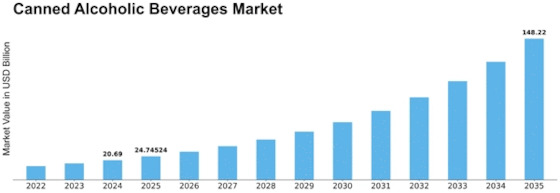

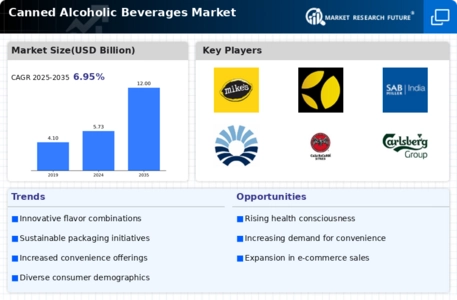
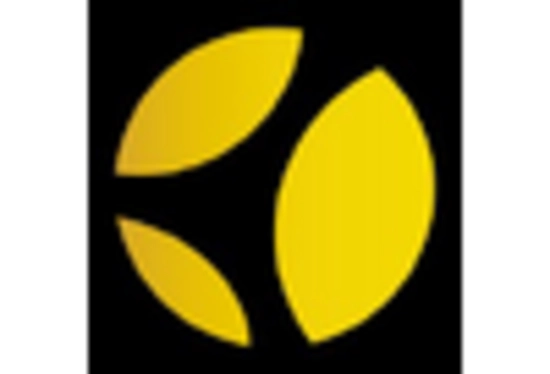
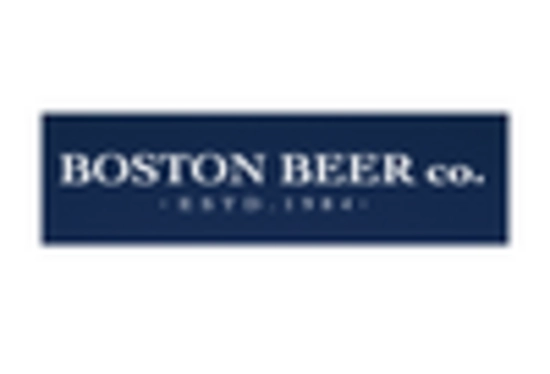
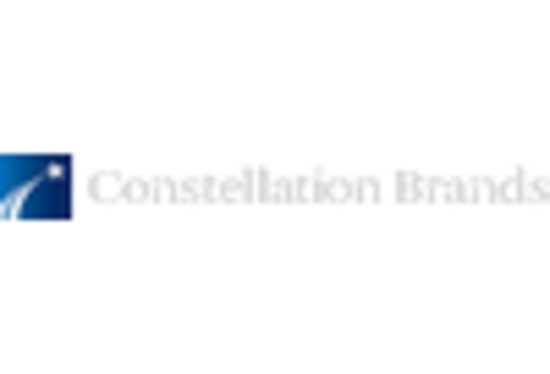
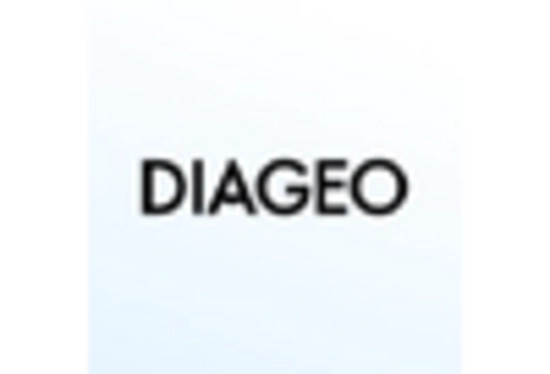
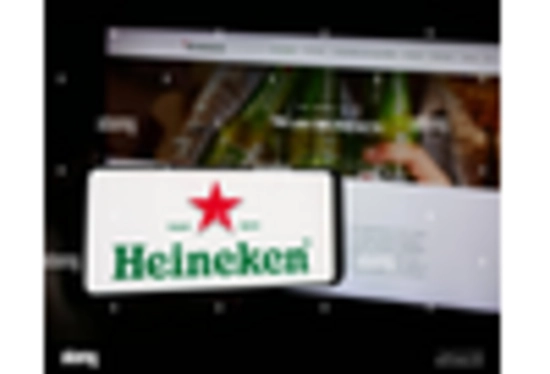
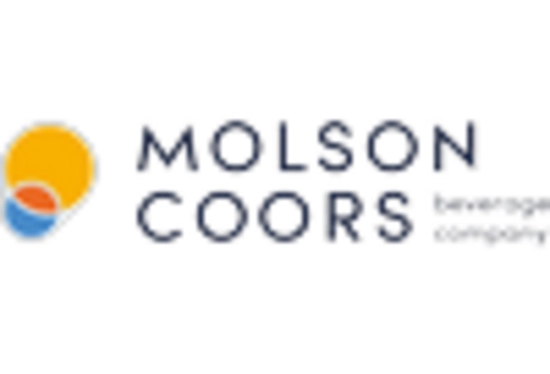

Leave a Comment